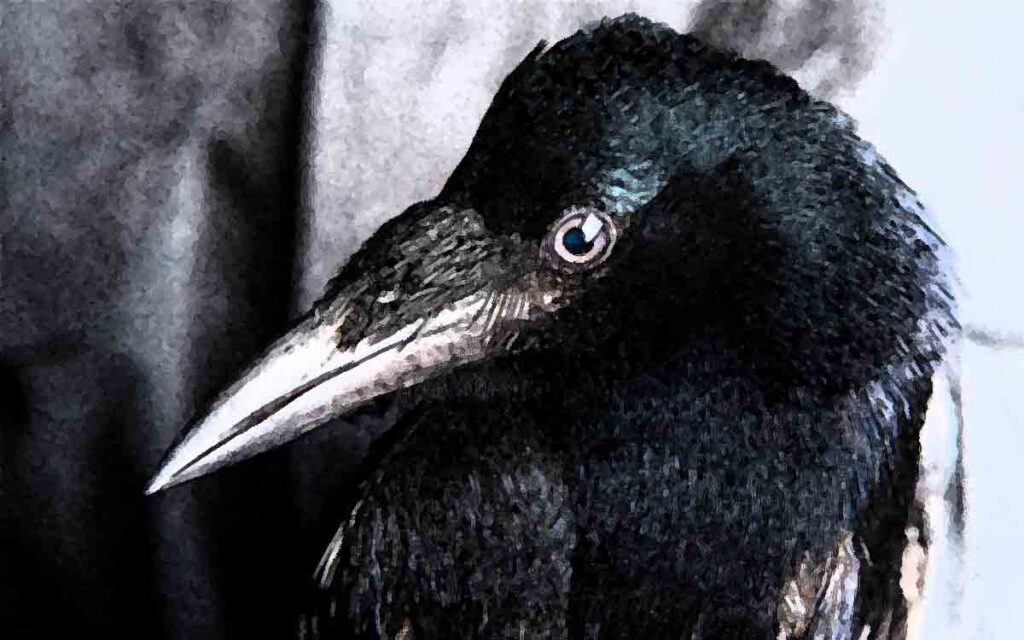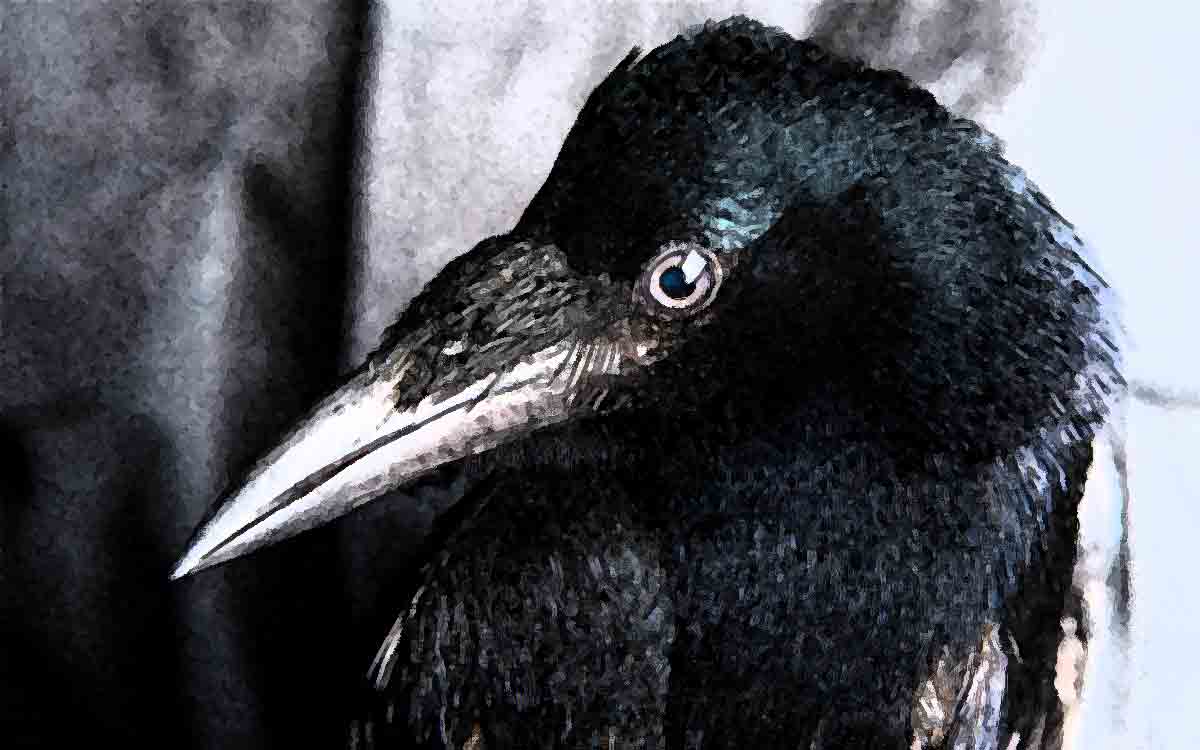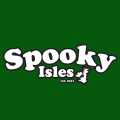The Morrigan, or Phantom Queen, is Ireland’s Dark Goddess associated with war and fate, an omen of death. ROIBEARD MCELROY reaches back in time to the Ulster Cycle to tell us where she came from.

The Morrigan comes arrayed like the festive sun onto the vales of Eireann. Her black mantle seems to envelop the cumulus cloud mass in the sky, seemingly emitting gamma rays that can penetrate the deepest layers of humanity.
This is the war goddess – the Morrigan of ancient Ireland, her veil unfolds its creases in the troughs and recesses of the Emerald Isle and her glare seems to have around the dermis of the eye an electro-magnetic force field. For the Morrigan comes with a harvest of righteousness.
Her different incarnations are like a multi-fluted gallery, in which a labyrinth forms for the first time. She evolves, mutates and contracts down through the vortices of time, as if her ectoplasm re-invigorates itself and replenishes layer by layer, on the piled compost of Ireland’s heartsong. She shapeshifts and becomes the Werecrow, whose deeply honed instincts for scavenging and poaching is pruned to a fine art.
She came to the Plains of Muirthemne, to the venerable swathes of Ferdia’s Fort, in the north east of the country and the Kingdom of Oriel, which covered what is now known as Armagh, Monaghan, Louth, Fermanagh, Tyrone and Londonderry/Derry.
She spoke from within the deepest bass of the vocal chords, from the vocal chords of relentless frenzy, emitting the shrill cry of utmost terror. But it didn’t resound aurally in the valleys, glens or countryside – it was transmitted telepathically from mind to mind.
She possessed that uncanny acumen of both vocal speech and telepathic communication. The message relayed itself as:
“I am the Morrigan, the first, the last, the fearsome one, who comes with the indignation of millions; my terror is a terror of retribution, in which I shall wreak havoc and destruction. No force can repel or dissuade me from my plan. My wrath is stoked by the just catharsis of my vengeance.”
On this day, that herculean hero, Cuchulainn, once known as the boy Setanta, the premiere warrior of all of Ierne, the chief battling man of the Red Branch Knights, was standing erect, having tied himself to a stone, to face his enemies. The lifeforce had all but departed from him, and all but sailed away to the great exiledom, from which there is no return.
The Morrigan’s feathers were waving and tossing back and forth that day, as if they were two trees in the wind. She was flitting from her human form to the Werecrow of voracious scavenging, in the blink of an eye. The molecules, atoms and particles were splintering like a meteor shower unfurling its glittering display for all to see.
The Morrigan spoke again and this time, it was vocalised, before finally mutation and shape shifting came fully into play, and her voice was like thunder – the thunder that was omnipresent at the beginning and the thunder that descends like foam on the crescent moon, with the trumpets of the apocalypse at the world’s end.
The loins of mother earth seemed to echo in the ligaments of her voice. The Morrigan spoke and her words were heard from the top to the bottom of Inis Fail, of Ierne, of Inis na bhfiodhuidhe and from the mountain tops capping the swathes of Eireann, to the lowlands, north, south, east and west, glistening and glittering at the cusp of the western sun’s descent.
It was like a giant echo was flashing back and forth out of a cosmic cavern. The Morrigan spoke:
“Cuchulainn, the daring one, the one resplendent on the plain of battle, who killed all before him, whose warp spasm could unleash a blackhole in the universe, one time too many you faced a foe. Even your Grey Mane knew, this would be your final battle. But my exhortation to battle, my war cry and intonation, were heard by many, especially you. Many blood cells I infused with crushing zeal and I inflamed the land and the earth with the credo of war; the wispy plumes were brisk and lightning fast in their rising. I was well served and had a ravenous feast.”
The Morrigan transformed herself totally and brutally into her alter ego, her shadow, her second self, her inner self, her covert other – the crow of wantonness, that would leave the vulture in the shade.
The Crow’s eye was so deep and thrusting, it could uproot the heart of the most dashing of warriors; it could make incisions of precision. It had its fill with the flesh of Cuchulainn, as if his flesh was some sort of sacrificial marrow on a funeral pyre or druidic tabernacle, to be offered up as a libation to the divine ones – as if a sacrament to be devoured to propitiate the transgression and wrong doing permeating the land and domain.
Perhaps the moral of this tale is, that the Morrigan personifies the dichotomy which lies in all of us – we can shape shift or change form if we so will it. The different layers, shades, contours and veneers, that lie within our characters, physiology and make up, can rise up and manifest themselves, if so beckoned and called; they are many sides of the same coin, diverse personas of the same panorama. The Morrigan is part of us all and will forever embody Ireland.
The Morrigan
A Werewolf is but a figment
of the child’s playful legend
for the Morrigan’s feather and pigment
aromatic blossoms opened
with cape and mantle unfurled
like squalls in jungle hammocks
hurling myths are orbits hurled
hot rods and golden bannocks
Morrigan the fleece outer
worm holes drilled through
invisible hooves and steps ’bout her
leaves pressed and stamped anew
fixated by the crow
shape shifting her antennae
new food and crops to grow
the love of three her manna
Eye roll of mighty raiments
the curved moonbeam of vengeance
rich rogues of the elements
stretching the stone sharp seance
human script like open tendon
Epics and sagas and cycles racing
supple hanging in a world without endin’
a culture map of interlacing.
– Roibeard McElroy



